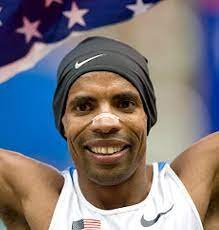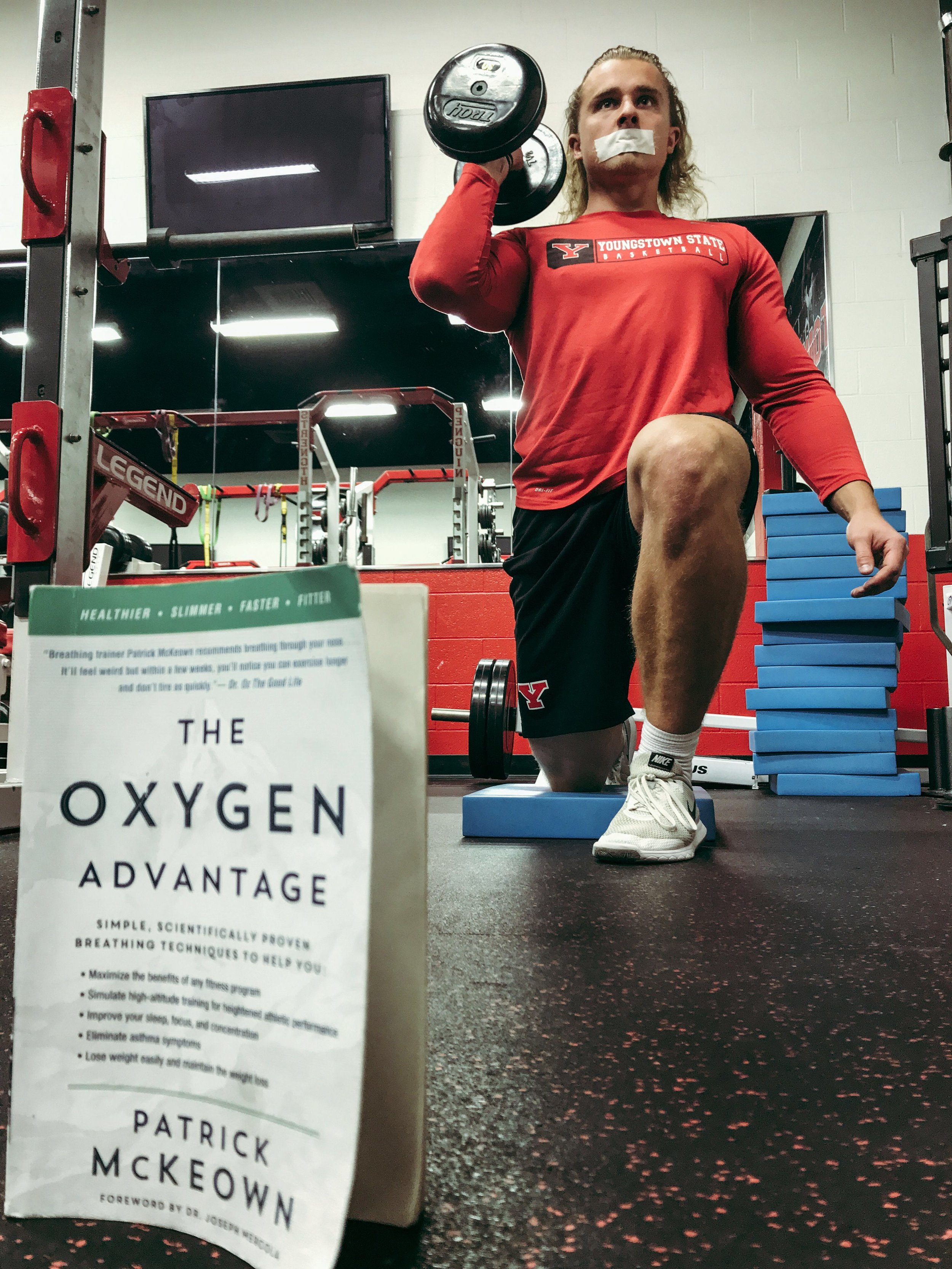How to Run Faster Without Getting Tired Or Training For Hours
Do you want to improve your 5K run time, conquer that 10K race, or even tackle a marathon without sacrificing countless hours to gruelling training regimes?
If you've been looking for a way to unlock your running potential, here's some exciting news: there's a single breathing technique that has helped numerous runners achieve remarkable improvements in their running times.
It's all about enhancing your breathing.
You see, many runners struggle to achieve their personal best not because they lack the willpower or determination, but because their breathing technique might be holding them back.
In this article, we're diving deep into the art and science of running performance, focusing on the power of nasal breathing and how it can be the game-changer you've been seeking.
The Nasal Breathing Debate
Before we get into the nitty-gritty details, let's address the ongoing debate in the running world. You've probably heard conflicting advice about whether you should breathe through your nose or mouth while running.
Some experts argue that gulping down air through your mouth is the way to go, ensuring maximum oxygen intake during intense runs.
On the flip side, there's Dr. George Dallam, a distinguished exercise science professor and former USA Triathlon National Team coach, who challenges this assumption.
He presents a different perspective, suggesting that the most effective running technique is all about breathing through the nose.
The Importance of Nasal Function During Exercise
First off, it's crucial to understand that your nose does far more than simply filter the air you breathe. It plays a vital role in regulating your blood pressure, defending your body against infections, and contributing to your overall health.
However, when it comes to exercise, especially in challenging environmental conditions, your nasal function can take a hit. This can result in congestion, dryness, and even sinus pain, hindering your running performance.
Causes of Nasal Dysfunction During Exercise
So, why does this nasal dysfunction happen during exercise? Several factors come into play.
Your body's increased nasal secretions, fluctuations in physiological factors such as blood pressure and heart rate, and environmental elements like pollution and strong winds can all contribute to these issues.
How to Improve Nasal Function
Now, here's where it gets interesting. You can take steps to enhance your nasal function before you even hit the track or trail. Consider techniques like nasal irrigation, decongestants, or nasal sprays to prep your nose for action. Staying well-hydrated and using a simple nose clip can also work wonders in maintaining optimal nasal function throughout your workouts.
Quick Tips for Nasal Breathing While Running
You might be wondering, "Okay, but how do I incorporate nasal breathing into my runs?" The answer depends on various factors, including your BOLT score (we'll explain that in detail later), the development of your nasal airways, and your fitness level. Here's a quick guide to get you started:
For low to moderate-intensity exercise, focus on consistent nasal breathing.
When you step up the intensity to a moderate to high level, inhale through your nose and exhale through your mouth.
During high-intensity workouts, you might find it more comfortable to breathe in and out through your mouth.
Aim to keep your mouth closed as much as possible, shifting to mouth breathing only when the sensation of air hunger becomes overwhelming.
By mastering these techniques, you'll set yourself up for success in your running journey. But wait, there's more!
Benefits of Nasal Breathing While Running
Why should you bother with nasal breathing? Well, it offers a range of advantages that can propel your running performance to new heights. These include:
Increased oxygen uptake: Nasal breathing optimises the way your body takes in oxygen, setting the stage for more efficient energy production.
Better oxygen delivery: Your muscles receive oxygen more effectively, enhancing their performance and endurance.
Improved functional breathing: Nasal breathing aligns your body for optimal movement, making your runs feel smoother and more controlled.
Moisture conservation: It helps prevent dehydration, ensuring you stay hydrated during longer runs.
Protection against bronchoconstriction: Nasal breathing can guard against exercise-induced bronchoconstriction, a common issue for many runners.
The Science Behind Nasal Breathing
Now, let's dive into the science. From a functional standpoint, your nose is perfectly designed for breathing.
Unlike the mouth, which primarily serves as an alternative route for air, the nose filters and warms the air you inhale, adds essential moisture, engages your diaphragm muscle, and paces your breath. This deliberate pace gives your lungs more time to extract oxygen from the air, ensuring efficient oxygenation of your body.
But that's not all. Nasal breathing also taps into nitric oxide (NO), a game-changer in lung function. Nitric oxide enhances blood flow in the lungs, facilitates oxygen uptake, and bolsters your immune system's defences against pathogens.
The Misconception about Breathing
It's time to bust a common misconception about breathing: more air doesn't necessarily mean more oxygen. The awareness of the incredible power of functional breathing is on the rise. Examples like the Tarahumara tribe in Mexico, known for their exclusive nasal breathing during running, and the groundbreaking work of Russian doctor Konstantin Buteyko, who linked chronic hyperventilation to various diseases, underscore the transformative potential of proper breathing techniques.
[Image: Illustration of proper breathing]
Breathing Tips for Running: Balancing Your Blood Gases
Now, here's where things get truly fascinating. Balancing your blood gases through proper breathing can significantly impact your running performance. You need to understand the role of carbon dioxide (CO2) in the chemistry of breathing. CO2 acts as a trigger, prompting the release of oxygen to your hardworking muscles. Your sensitivity to CO2 can directly influence how soon you feel breathless during your runs.
The Connection Between Nasal Breathing and Athletic Performance
If you're still not convinced, consider this: top athletes like Roger Federer and Novak Djokovic have incorporated nasal breathing into their training routines. Why? Because nasal breathing helps maintain lower CO2 levels, reducing the sensation of air hunger and optimising the delivery of precious oxygen to your muscles.
How Nasal Breathing Keeps You Healthier
It's not just about better running; nasal breathing offers a range of health benefits too. These include cleaner air intake, improved sleep quality, reduced snoring, and enhanced protection against common respiratory issues often experienced by athletes.
Maintaining Nasal Breathing 24/7
Now, the real secret to mastering nasal breathing is making it a way of life. Achieving full-time nasal breathing requires some adaptation. Start by slowing down your exercise pace and gradually increase intensity as you adapt. Keep a close eye on your BOLT score (we'll explain that shortly) and practice unblocking your nose if necessary. For elite runners, the key is striking a balance between nasal and mouth breathing during training sessions.
Strengthening Your Breathing Muscles
Endurance running can put your breathing muscles to the test, affecting your overall performance. Strengthening your diaphragm and inspiratory muscles can make a world of difference. Techniques like inspiratory flow resistive loading (IFRL) and tools like the SportsMask can boost your breathing muscle strength by up to 50%.
Breathing Exercises for Running
If you're ready to take your breathing to the next level, there are exercises designed specifically for runners. One such approach is the Oxygen Advantage®, which focuses on diaphragmatic strengthening. These exercises simulate high-altitude training by inducing hypercapnia and hypoxia, conditioning your diaphragm for more efficient breathing during runs.
Integrating Nasal Breathing into Your Training
Now, the practical part: integrating nasal breathing into your running routine. Here's a step-by-step guide:
Begin slowly, concentrating on light air hunger, and gradually increase the intensity of your runs.
Incorporate a progressive warm-up routine and indoor training sessions that revolve around nasal breathing exercises.
Monitor your breathing habits and practice unblocking your nose if necessary.
If needed, leverage tools like MYOTAPE Sport or NasalDilator to facilitate nasal breathing during your workouts.
Ensure full-time nasal breathing even during sleep by using MYOTAPE to tape your mouth.
In Conclusion
In conclusion, nasal breathing isn't just a game-changer; it's a powerhouse tool for optimising your running performance and overall well-being. By embracing nasal breathing techniques, you can experience improved stamina, reduced airway issues, and enhanced recovery—all while reaping the numerous benefits of proper breathing.
Remember, your nose is your natural ally in the quest for better running performance.
Thanks for reading!
Stuart Goldfinch (EX UK SAS Trainer, Specialist Running Physio, Sports Rehabilitator)
P.S. I’m doing running assessments in my Liverpool City Centre Clinic, this includes an assessment of your breathing technique to see whether you are utilising oxygen to its best ability which will make you a better runner. This can also be done virtually.
BOOK HERE
If you have any questions, just give me a message!








